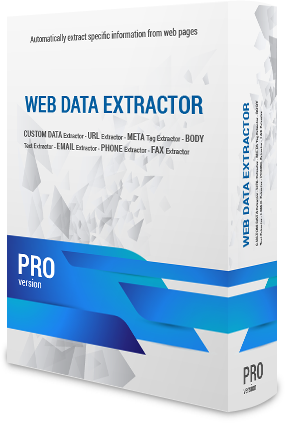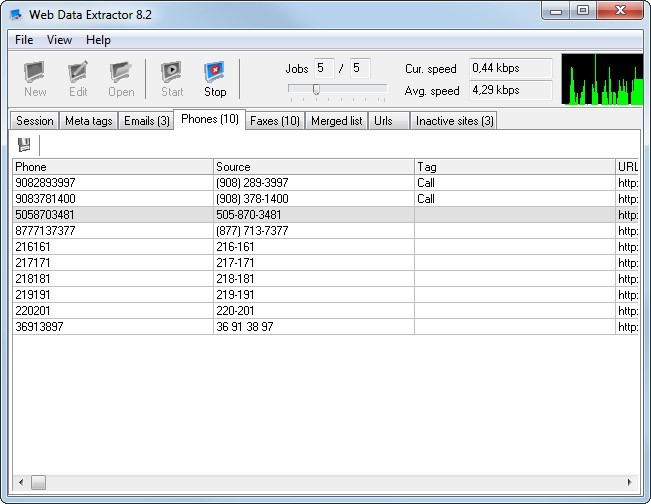

- #Website meta data extractor software
- #Website meta data extractor license
- #Website meta data extractor free
The added metadata is mainly used to inform search engines about the purpose of a website. Each website carries a different type of metadata that is not directly visible to end users.
Due to its specific characteristics and its simplicity, it is well regarded in digital preservation groups.Here is a list of best free online website metadata checker services. Only allows export of metadata using plain text. Specializes in the analysis and comprehension of metadata of the TIF format. Has a basic interface, very simple to use. Desktop application written in Delphi/Object Pascal. Multilingual support (up to 17 languages).ĭeveloper: AWare Systems (Joris Van Damme). GPS data is very well integrated with Google Earth, Google Maps and 13 other map services. Allows you to highly customize the import and export of EXIF and IPTC-NAA data in text format, html table, html text and BBCode format. Supports JPEG, TIFF, GIF, PNG and most common RAW files. Reads metadata EXIF, IPTC and metadata from the ICC profiles (International Colour Consortium). Has a very intuitive graphic interface that includes a file browser in a tree structure and allows the display of image thumbnails as well as a histogram in simple channel view. Desktop application written in Visual Basic. License: Proprietary software (freeware).
Exports metadata from the XML format to later be exploited by digital preservation policies and systems. Offers the possibility of processing multiple directories.  Processes both simple and compound files, such as a web page. The tool only reads the information keeps the integrity of the original file intact. At the still image level it supports BMP, GIF, JPEG and TIFF. Automatically extracts preservation metadata from the header of a variety of formats of photography, video, audio, text, among others. Subsequently, the XML file is transformed using extensible style sheet language (XLS) to an XML file based on the preservation data model of the NLNZ. During the first phase, a "library of adapters" recognizes the incoming format, extracts the metadata from its headings and generates an XML file.
Processes both simple and compound files, such as a web page. The tool only reads the information keeps the integrity of the original file intact. At the still image level it supports BMP, GIF, JPEG and TIFF. Automatically extracts preservation metadata from the header of a variety of formats of photography, video, audio, text, among others. Subsequently, the XML file is transformed using extensible style sheet language (XLS) to an XML file based on the preservation data model of the NLNZ. During the first phase, a "library of adapters" recognizes the incoming format, extracts the metadata from its headings and generates an XML file.  Presents a graphic interface for Windows and a command line interface for UNIX systems.
Presents a graphic interface for Windows and a command line interface for UNIX systems. License: Apache License version 2.0 (compatible with GPL v3).ĭeveloper: National Library of New Zealand.
 Renames files and organizes in them in directories (by any selected metadata). Geo-references images based on their GPS metadata, applies automatic time correction and is also capable of generating tracking records. Offers different metadata export formats (CSV, HTML, XML or JSON) in several languages. Reads and edits metadata sets such as EXIF, IPTC, XMP, ICC Profile. Supports a large variety of still image formats and video, audio and textual formats as well. Has to be used through a command line interface. Platform built using the Perl programming language and requires Perl 5.004 or later (Windows also offers an independent executable that does not require Perl). They are useful to obtain more information about the context of the image (author's identification, GPS coordinates, camera used, lens model, aperture, flash, date, among others) and/or perform a metadata extraction to be exploited by another system. These are tools that allow the reading and extraction of technical metadata (capture and editing) and descriptive metadata.
Renames files and organizes in them in directories (by any selected metadata). Geo-references images based on their GPS metadata, applies automatic time correction and is also capable of generating tracking records. Offers different metadata export formats (CSV, HTML, XML or JSON) in several languages. Reads and edits metadata sets such as EXIF, IPTC, XMP, ICC Profile. Supports a large variety of still image formats and video, audio and textual formats as well. Has to be used through a command line interface. Platform built using the Perl programming language and requires Perl 5.004 or later (Windows also offers an independent executable that does not require Perl). They are useful to obtain more information about the context of the image (author's identification, GPS coordinates, camera used, lens model, aperture, flash, date, among others) and/or perform a metadata extraction to be exploited by another system. These are tools that allow the reading and extraction of technical metadata (capture and editing) and descriptive metadata.








 0 kommentar(er)
0 kommentar(er)
